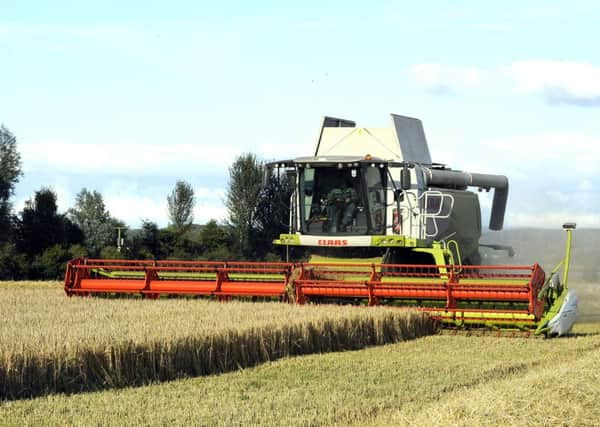Scots farmers begin to see benefits of disease resistance
This article contains affiliate links. We may earn a small commission on items purchased through this article, but that does not affect our editorial judgement.


Speaking at yesterday’s Cereal in Practice – an event which combines cereal variety trial plots with demonstrations of cutting-edge technologies – the head of plant health at the SRUC, Professor Fiona Burnett, said that there were real signs of a change in attitude.
“Breeders have always offered varieties with a certain amount of resistance to diseases but, to date, farmers haven’t really taken these up or valued them as highly and have seen increased yield as their main selection criteria when choosing new varieties,” she said.
Advertisement
Hide AdAdvertisement
Hide Ad“But with many diseases becoming increasingly difficult to control and often requiring a cocktail of several different products to keep on top of rather than just one, the cost of doing this has made growers look more closely at varietal resistance.”
• READ MORE: Farming news
Burnett said that while there might be an element of “closing the stable door after the horse had bolted” in this, as the high use of chemical control measures had resulted in diseases becoming resistant, this marked a real change in thinking in the industry.
Dr Adrian Newton of the James Hutton Institute (JHI) said that a change in management skills and attitudes would be required to make best use of a variety’s diseases resistance – as crops would need to be more closely monitored and any sprays better timed to gain the full benefit. However, with normal spray programmes currently costing in the region of £140-£150 per hectare, real savings were there to be made.
Dr Simon Oxley, who draws up the Agriculture & Horticulture Development Board’s recommended list, said that there were several new wheat varieties coming on to the market which offered considerable improvements in disease resistance ratings. He said better resistance to diseases often seemed to compromise yields but these newer varieties offered excellent treated and untreated yields.
“And while the untreated yield of older varieties would generally be about 70 per cent of the treated control, three of the new varieties on this year’s list suitable for growing in Scotland offer untreated yields of closer to 90 per cent of the control,” he said.
With Septoria tritici representing on the biggest problems in Scotland’s damp climate, Oxley said that real steps had been made – but he stressed that getting a gradual and robust build up of disease resistance in plants would be better than sudden, one-gene resistance.
“We have seen this in wheats with resistance to yellow rust in the past – with a plant being almost totally resistant one year, yet the development of a new race of rusts are able to overcome that resistance in a short period of time.”
Advertisement
Hide AdAdvertisement
Hide AdHe said that multi-site resistance, with a gradual build up over time, would give a much greater degree of sustainability to any resistance.
The use of “elicitors” was also highlighted at the event, with relatively simple compounds being used to prime plants and prepare them for a disease outbreak in a manner similar to vaccination.
“While they undoubtedly fall short of the performance from a fungicide, they allow plants to respond far better to any disease challenge and this can sometimes be enough to prevent a major disease outbreak, especially if applied at any early stage,” said Newton.
The prevalence of barley yellow dwarf virus (BYDV) in many crops in the south of the country was highlighted by the SRUC’s Andy Evans, with the warm winter allowing a considerable carry-over of the aphids which spread this disease – which he said could knock yields by between two and three tonnes per hectare.
But he warned that the threat posed by this could become greater – as neonicotinoid seed dressing were likely to be removed from the armoury shortly: “And on top of this a high proportion of aphids are now resistant to the pyrethroid sprays used to control them so the problem can only grow in the future.”
However, although perhaps still some way off from commercial release, JHI barley geneticist Dr Bill Thomas said that recent advances in genetic screening was helping researchers identify varieties which had a higher degree of resistance to BYDV.